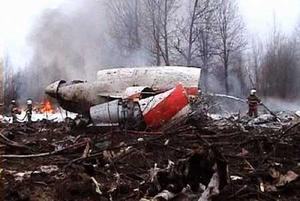Aviation securityStudy challenges Russian investigation of Smolensk plane crash
A new study by a team of experts of the 10 April 2010 plane crash near Smolensk, Russia, in which the Polish president, his wife, nine NATO generals and others were killed, raises pointed questions about the conclusions of the official Russian investigation into the incident, and points to contradictions and discrepancies in the report

Wreckage of the Smolensk plane crash // Source: svtm.vn
An airplane carrying ninety-six passengers, including president of Poland Lech Kaczyński, the First Lady, nine top NATO generals, and dozens of Polish dignitaries crashed near Smolensk, Russia, 10 April 2010, killing all aboard. The Russian government says the crash was an accident, but University of Akron professor Wieslaw Binienda, chair of the Department of Civil Engineering, disagrees. Binienda has spent the past two years combing details of the final report from the Russian investigation into the Smolensk crash, uncovering contradictions and discrepancies in the report and backing his findings with scientific evidence.
A University of Akron release reports that restricted entry to the crash site, victims’ bodies in sealed coffins, and the aircraft’s undisclosed black boxes raised a disturbing red flag for Binienda, and prompted him to investigate the Russian findings.
One particular discrepancy caught Binienda’s attention. The report indicated that the plane, after losing one-third of its wing when it snipped a birch tree, flew upward thirty meters, and then inverted and crashed, killing everybody aboard.
“I could not agree with this scenario. An airplane without a wing crashes. It can’t fly upward after losing a major part of the wing,” explains Binienda, who also serves as editor-in-chief of the Journal of Aerospace Engineering.
Binienda developed a computerized simulation of the aircraft-crash scenario based on the facts and data presented in the official report. For his analysis he used the same technology employed by NASA to analyze the Space Shuttle Columbia disaster. His results contradicted conclusions made in the official Russian report. Binienda’s simulation of the wing colliding with the birch tree demonstrates that the wing could not have been broken by a birch tree. In his simulations, Binienda analyzed various scenarios, including the worst-case scenario that assumed a larger diameter and higher density of the tree than officially investigated.
Binienda and a group of international experts have been working with the Polish Parliamentary Commission for the Investigation on the Smolensk crash. On 28 March 2012, a team of experts, including Binienda, presented their findings to the European Parliament. These findings challenge (the team also says the findings “invalidate”) the official conclusions. Binienda’s scientific analysis will present the platform for his 21 May keynote address at a Polish-French symposium at Warsaw Technical University in Poland.
The release notes that the controversy surrounding the investigation into the Smolensk crash, its high-profile victims who died while flying to commemorate the seventieth anniversary of the Katyn mass murder of the Polish elites, and Binienda’s findings continue to raise questions about the crash. Binienda says he would like to see a new independent investigation committee formed to reinvestigate the crash.
— Read more in John Mangels, “University of Akron engineering professor raises doubts about jet crash that killed Poland’s president,” Cleveland Plain Dealer, 29 April 2012
